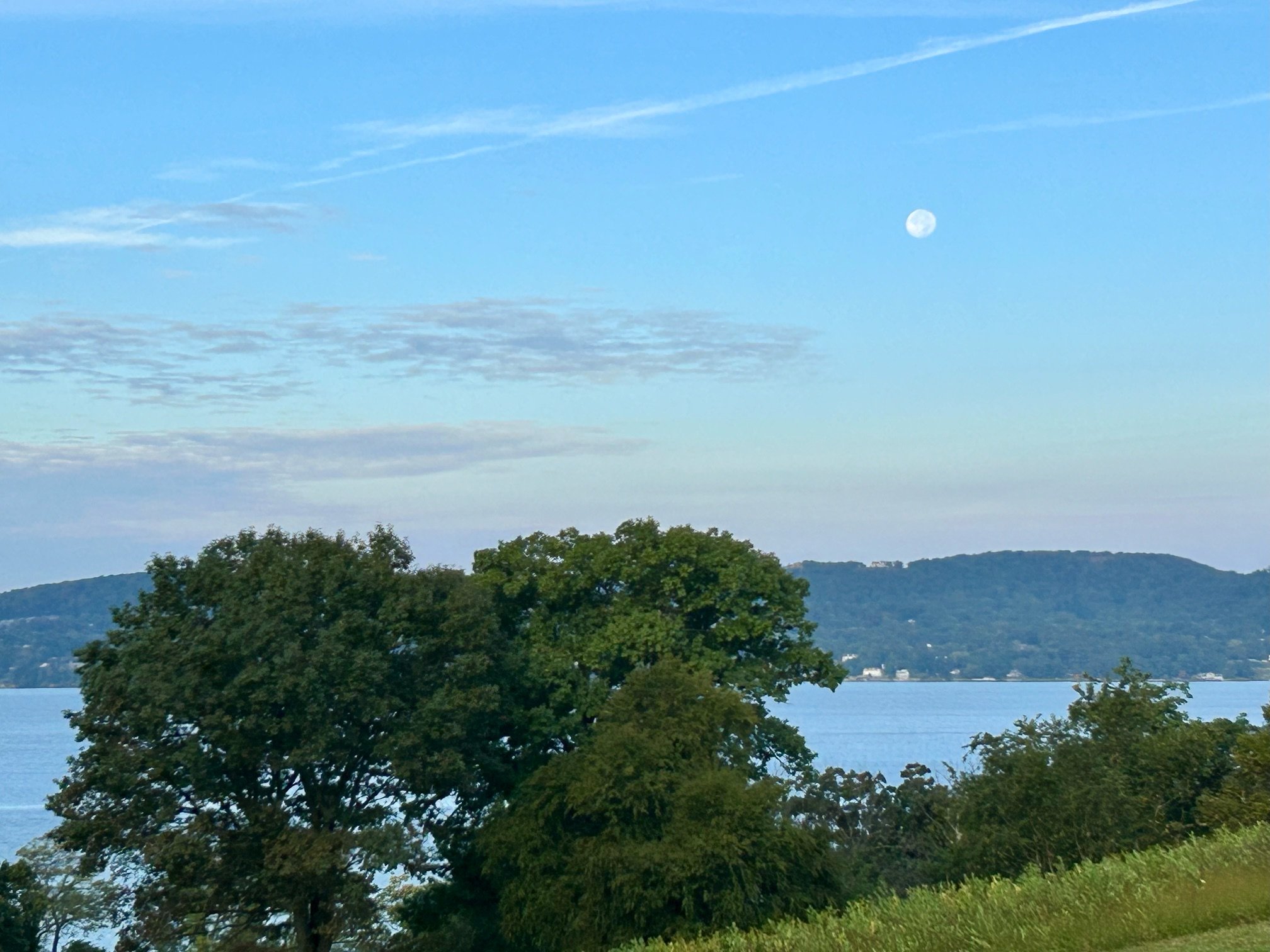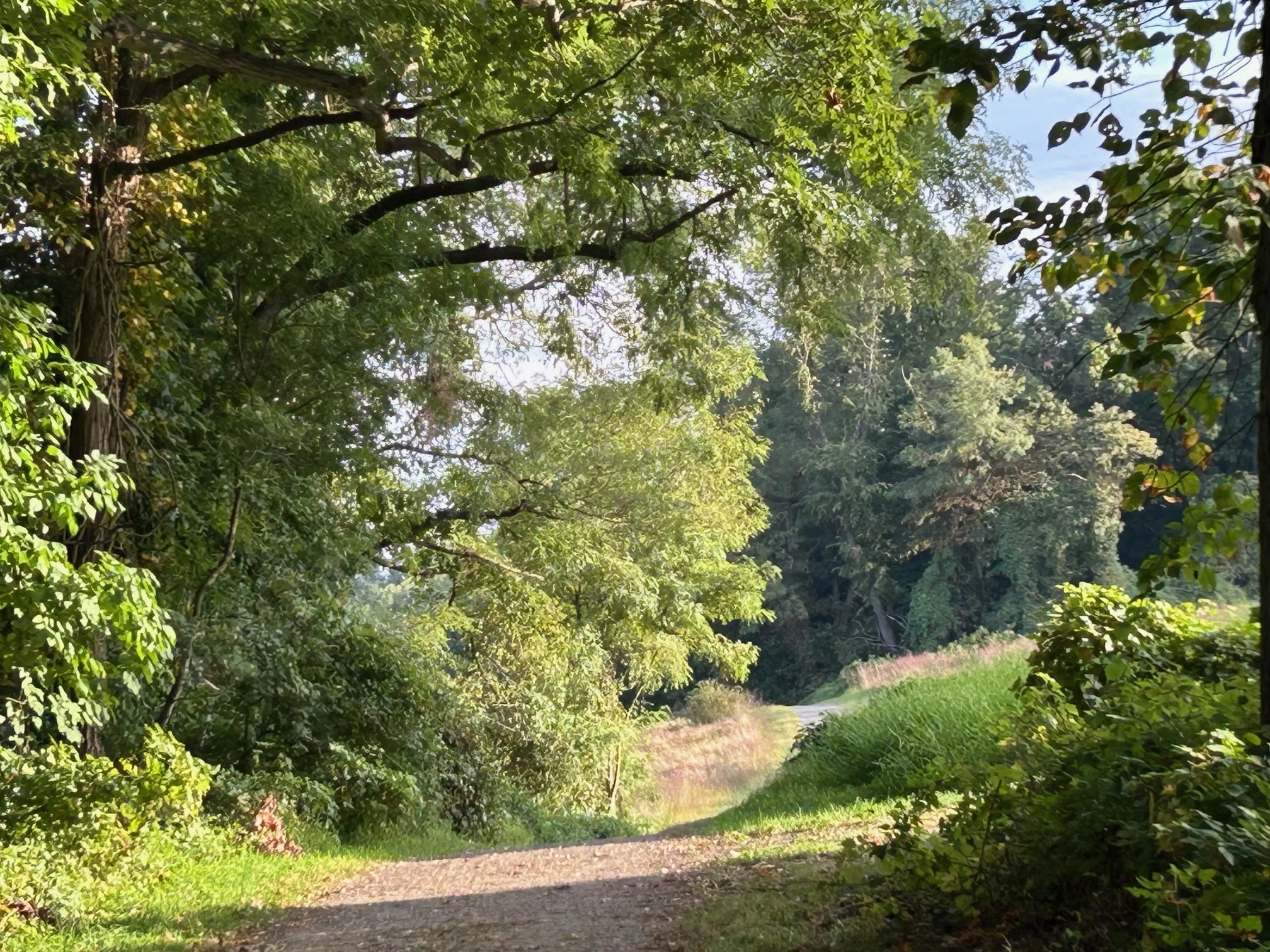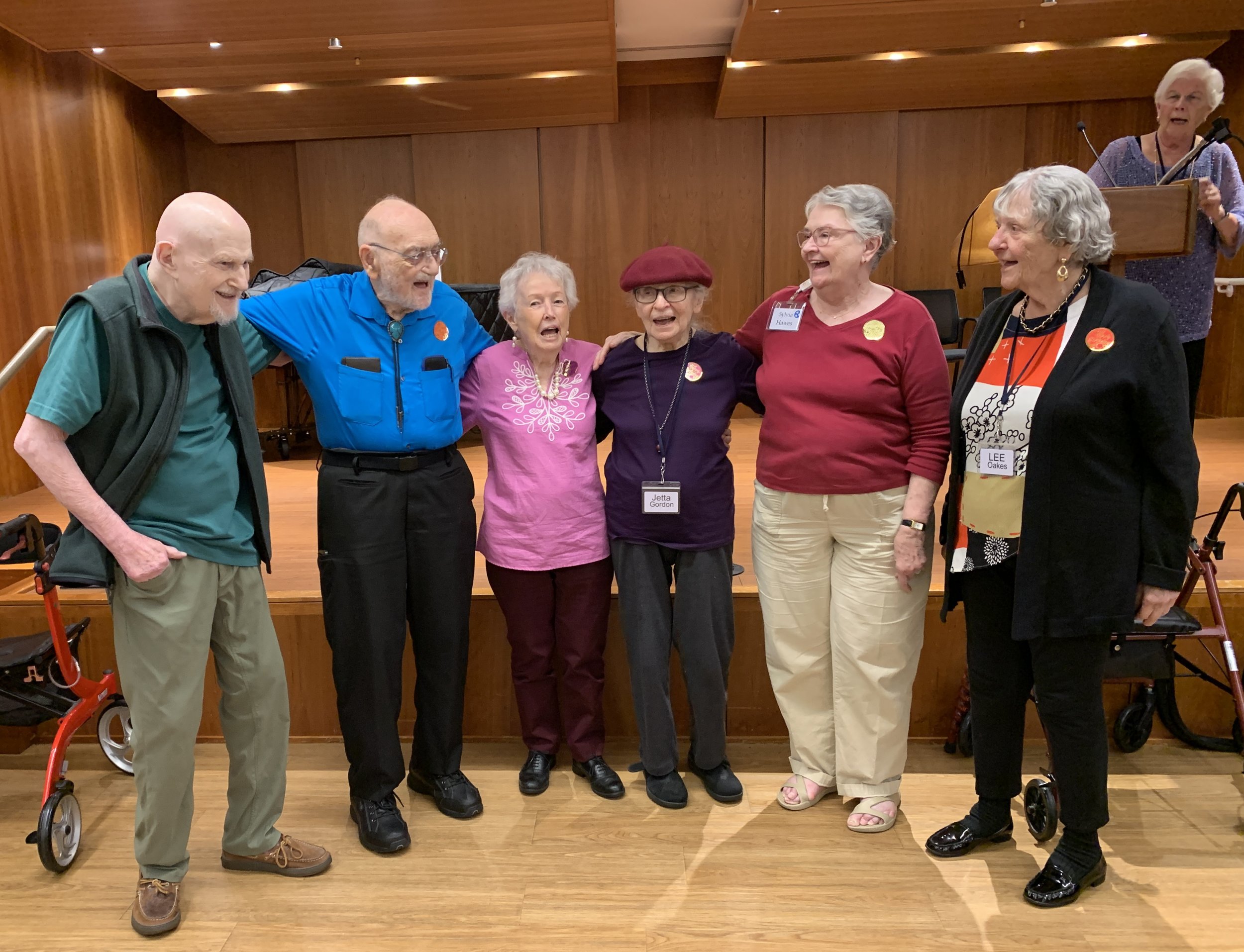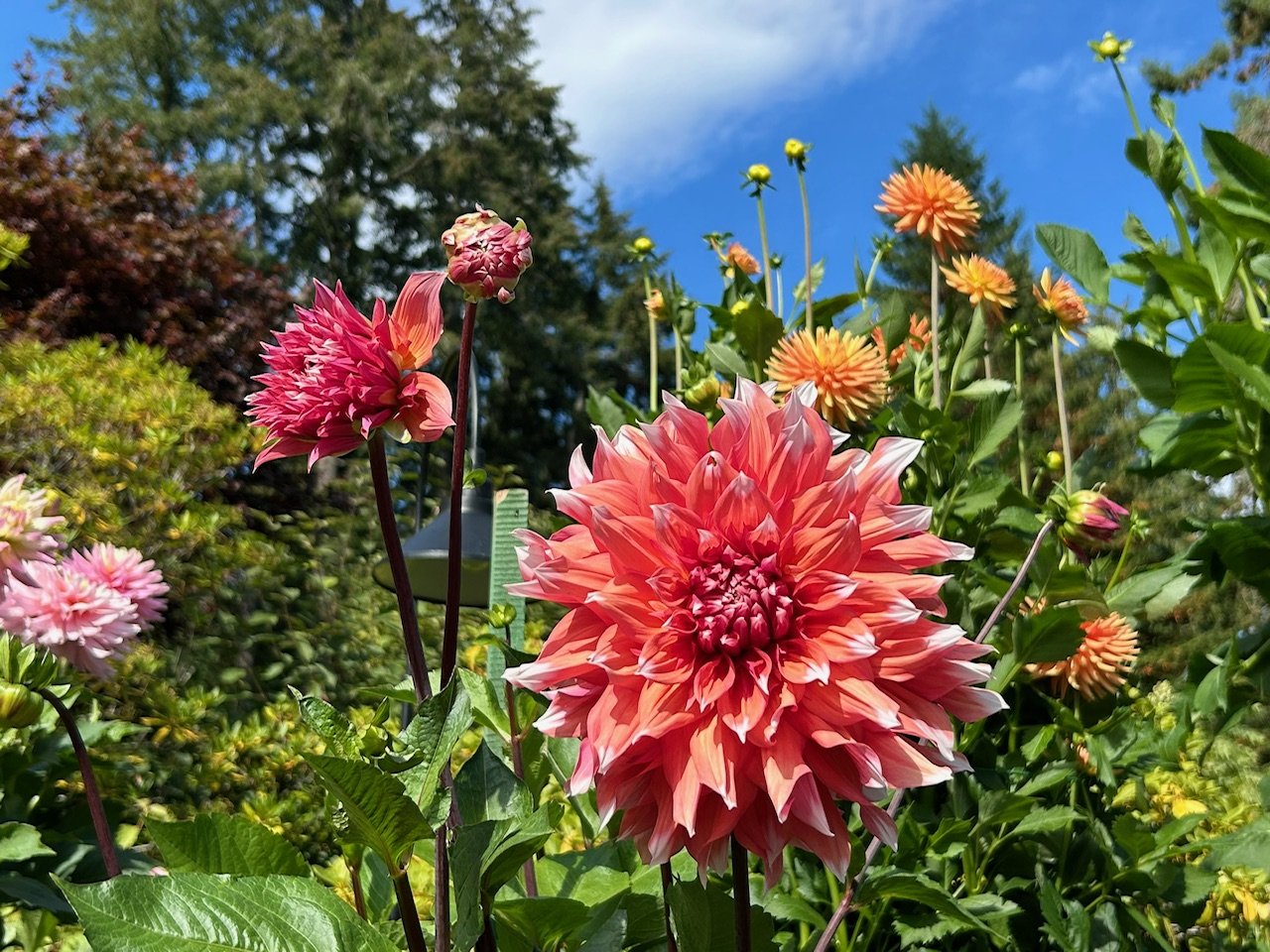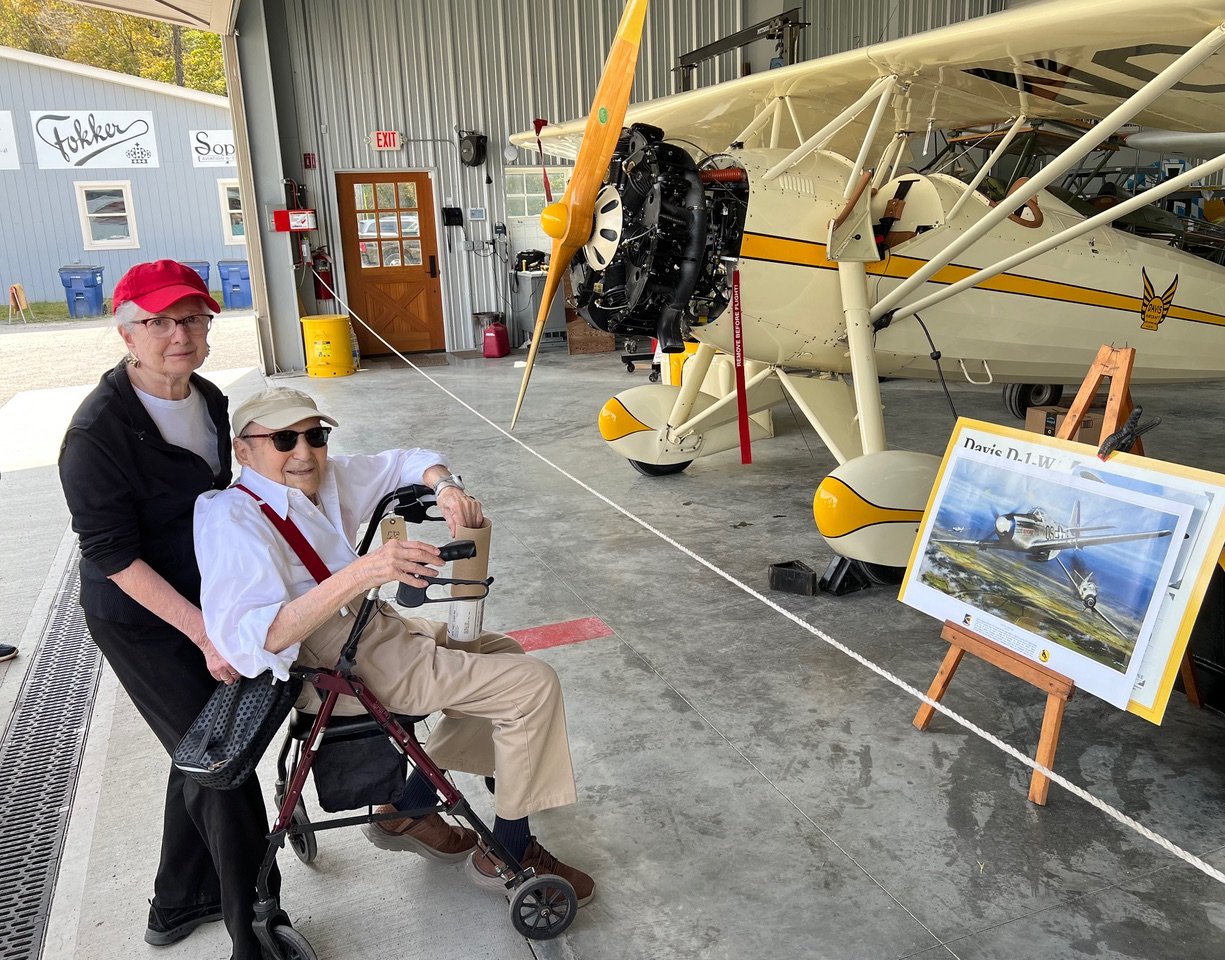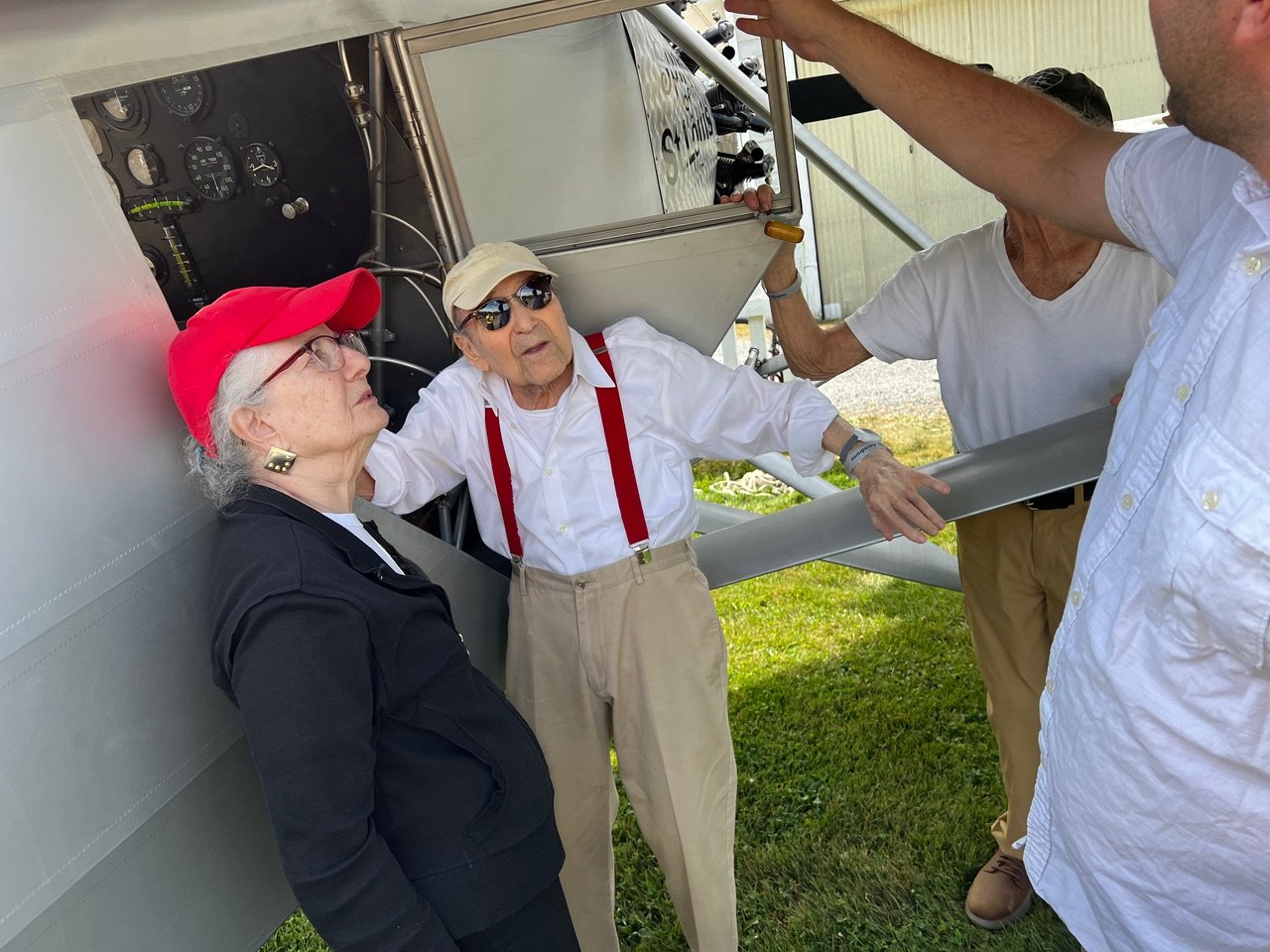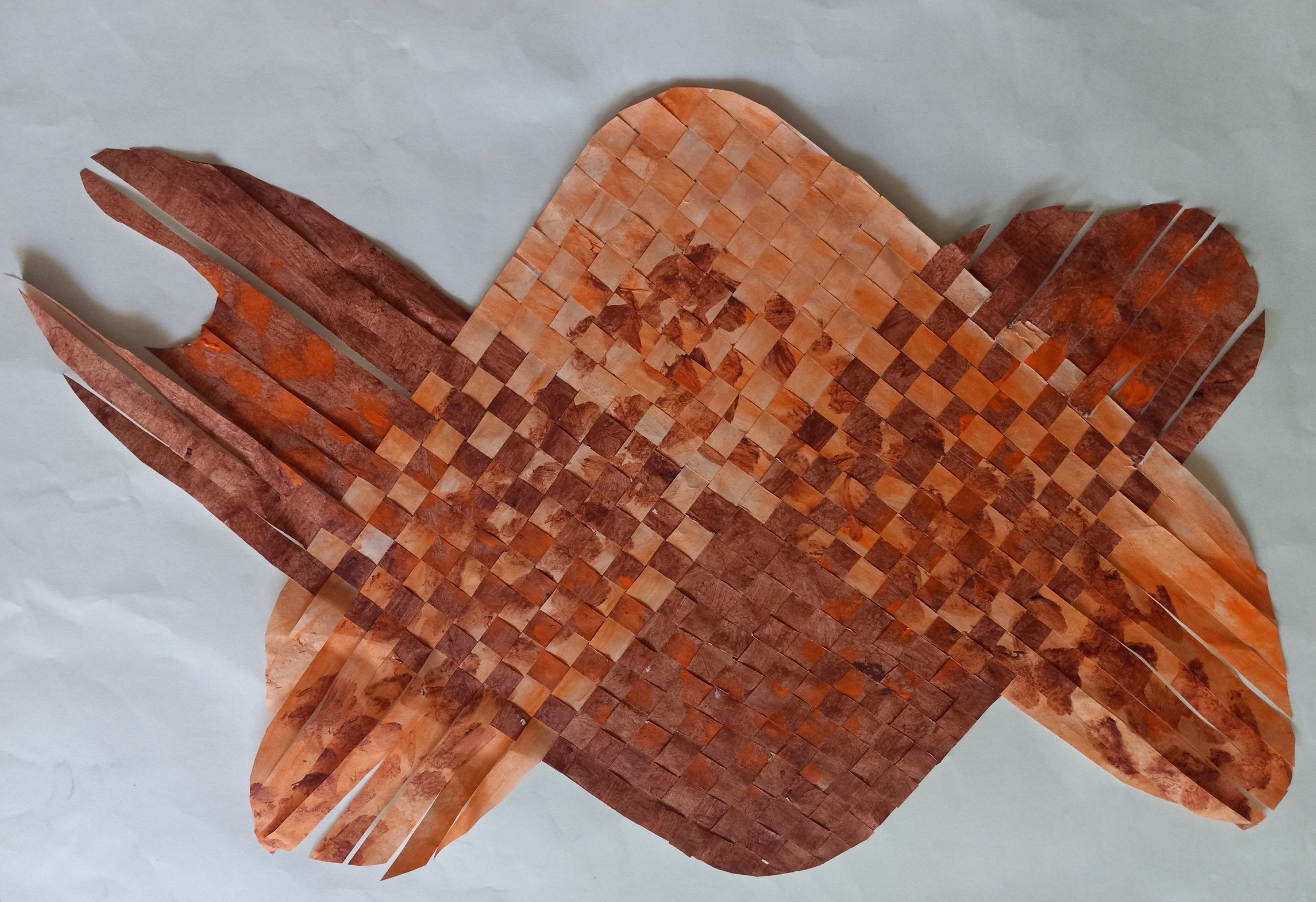‘Tis the Season
Voting: it’s at the core of our democracy. And one of the core activities of the League of Women Voters (LWV). The LWV of the Rivertowns hosts voter-registration tables all around our area, at schools, stores, and municipal events. Maria Harris, a Rivertowns LWV member, is often there, decked out and inspirational to citizens who wish to register—or reregister if they have moved—to vote. She’s picture perfect for the mission.
Wandering ‘round Stonecrop Gardens: a Kendal Trip
Barbara Wallach recently led a Kendal trip to Stonecrop Gardens in Cold Spring. Originally the joy of a private home, Stonecrop became a public garden in 1992. It’s stated mission is to “uphold and demonstrate the highest standards of horticultural practice and to promote the use of such standards among amateur and professional gardeners through aesthetic displays and educational programs.”
After a stroll around Cold Spring, the group lunched at Hudson House River Inn before meeting up with a Stonecrop docent who led the way around the plantings. Flowers are arranged by color, brought in off season, and replanted every year. Each plant is identified by a number by which a visitor can reference all 400+ plants.
Lunching at the Hudson House River Inn


























